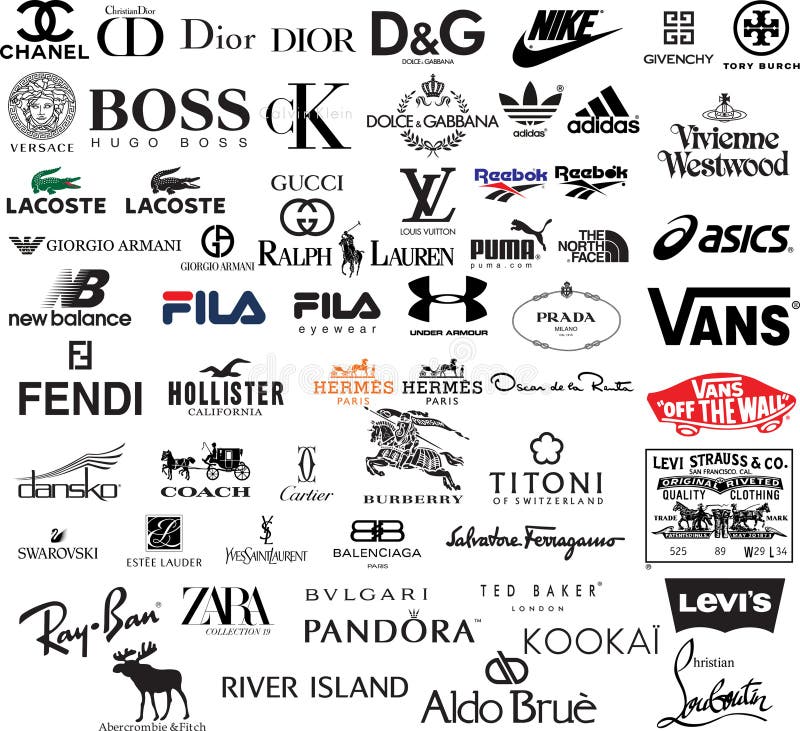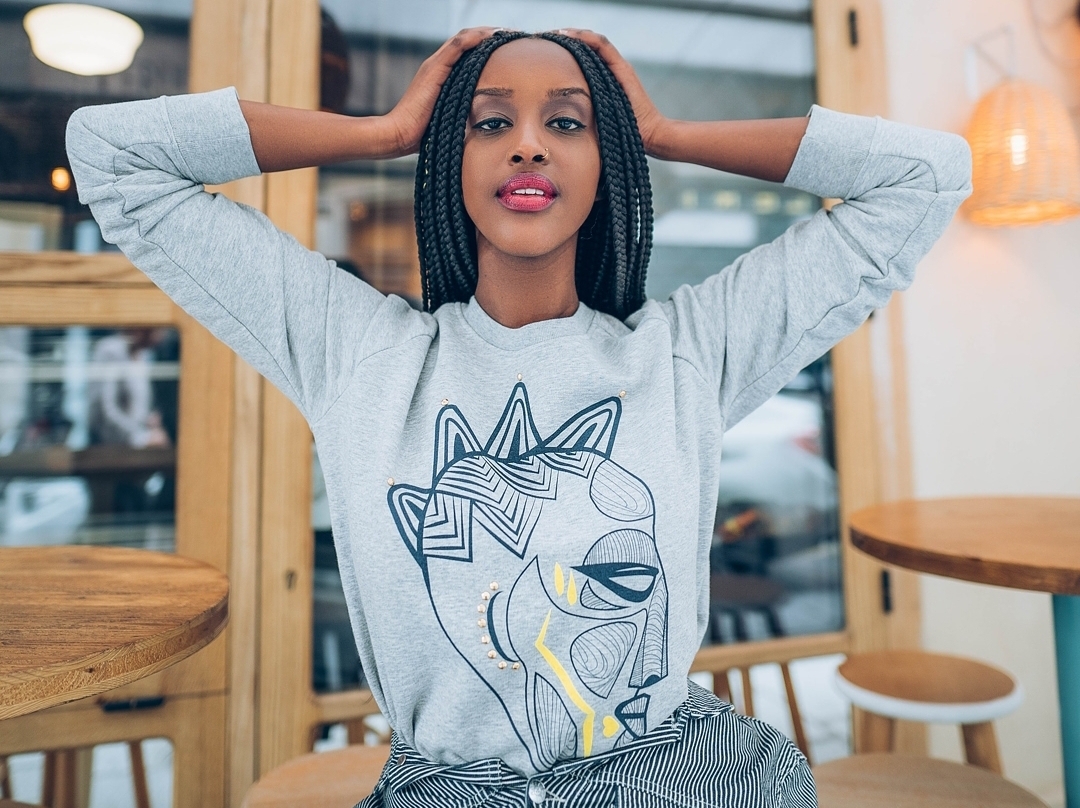What Makes Branded Clothing Ideal for Sensitive Skin?
Wiki Article
The Relevance of Lasting Garments: How It Influences the Atmosphere and Your Storage room
Sustainable garments is increasingly recognized for its vital duty in decreasing the ecological influence of the rapid fashion sector. By concentrating on eco-friendly products and honest manufacturing approaches, it attends to pushing eco-friendly concerns. This shift not just benefits the planet yet also affects customer options, resulting in an extra thoughtful strategy to closet monitoring. Understanding these characteristics elevates necessary concerns concerning style's future and individual obligation fit it.The Ecological Footprint of Fast Fashion

Advantages of Sustainable Materials
Sustainable materials offer substantial benefits, particularly through environmentally friendly fabric selections that decrease environmental injury. These products also show durability and long life, minimizing the requirement for frequent substitutes. Because of this, they add to a more sustainable style industry and advertise accountable customer actions.Eco-Friendly Fabric Options
While the garment industry has long been connected with quick patterns and environmental damage, the rise of environmentally friendly textile options presents a transformative chance. Sustainable products such as natural cotton, hemp, and Tencel have acquired appeal as a result of their lower eco-friendly influence. These fabrics are commonly produced without unsafe pesticides and call for much less water, decreasing their carbon footprint - Branded Clothing. Furthermore, several green fabrics are eco-friendly, contributing to a circular economic climate by lessening waste. Choosing lasting products not just supports environmentally accountable methods however likewise promotes much healthier ecological communities. As consumers become a lot more knowledgeable about their purchasing power, the need for eco-friendly fabrics motivates brands to innovate and take on even more sustainable manufacturing methods, ultimately benefiting the planet and future generations
Resilience and Durability Benefits
Many consumers are significantly acknowledging the durability and durability advantages of lasting materials in their apparel options. Unlike traditional fabrics, lasting products such as natural cotton, hemp, and recycled polyester are crafted to withstand deterioration, resulting in garments that last longer. This reduced frequency of replacement not only conserves customers money gradually but also lessens waste generated by fast style. On top of that, sustainable clothing often uses environmentally friendly production approaches that improve material toughness, adding to a decrease in the overall carbon impact. By buying long lasting apparel, customers can cultivate a more sustainable closet while taking pleasure in high-quality pieces that keep their aesthetic and performance gradually. Durability and longevity stand as crucial advantages of choosing sustainable products.Minimizing Waste Via Lasting Practices
Reducing waste in the fashion business can be accomplished via innovative practices such as upcycling and repurposing products. Furthermore, taking on minimalist wardrobe techniques encourages consumers to focus on quality over quantity, inevitably lowering clothing usage. Together, these techniques contribute substantially to an extra lasting clothes model.Upcycling and Repurposing Materials
Upcycling and repurposing products have become innovative methods in the fashion business, changing thrown out fabrics right into important new products. This method not just reduces waste but likewise urges imagination and originality in clothes style. By taking old garments and products, designers can develop special items that show personal style while decreasing the need for brand-new resources. Additionally, upcycling usually needs less energy and water contrasted to typical production processes, greatly reducing the ecological impact of fashion. As consumers come to be more mindful of sustainability, the appeal of upcycled apparel proceeds to increase, promoting a circular economic situation. Eventually, these methods add to a more sustainable future, where style prioritizes environmental health over quick manufacturing and consumption.
Minimalist Wardrobe Techniques
As individuals increasingly seek to decrease their ecological effect, taking on minimal wardrobe methods has gotten traction as an efficient strategy to lasting fashion. These techniques emphasize quality over quantity, motivating consumers to curate a smaller collection of flexible, durable clothing. By concentrating on classic pieces that can be combined and matched, individuals can decrease the regularity of purchases and eventually reduce waste.Additionally, minimalism promotes conscious consumption, prompting customers to reflect on the honest and ecological implications of their choices. This strategy not only cultivates a much more sustainable way of life but likewise simplifies daily decision-making pertaining to clothing. As individuals welcome minimalist concepts, they add to a style culture that values sustainability and accountable consumerism, inevitably leading to an extra eco-conscious culture.The Duty of Ethical Labor in Sustainable Style
While several consumers are progressively familiar with the environmental effects of their clothes options, the value of ethical labor methods in sustainable style can not be ignored. Honest labor encompasses fair earnings, safe working conditions, and respect for workers' legal rights, creating the backbone of responsible fashion manufacturing. Brand names that prioritize ethical labor not just boost areas but additionally established a requirement for responsibility in the industry.Moreover, the combination of moral methods fosters openness, making it possible for consumers to make enlightened choices regarding their acquisitions. This practice contrasts dramatically with fast style's unscrupulous labor versions, which typically focus on profit over individuals. By sustaining companies devoted to honest labor, consumers contribute to a system that values human self-respect together with environmental sustainability. Consequently, ethical labor is not merely an add-on; it is vital to the more comprehensive objective of sustainable fashion, making sure that the pursuit for eco-friendliness does not come with the expenditure of human rights.The Effect of Lasting Clothing on Carbon Emissions
Sustainable garments has the prospective to greatly lower carbon exhausts linked with the garment industry. Standard garment production contributes especially to greenhouse gas exhausts, largely as a result of energy-intensive production processes and the use of non-renewable sources. In contrast, sustainable fashion concentrates on green materials, such as natural cotton or recycled fibers, which usually need much less energy to produce.Moreover, sustainable brands tend to adopt more efficient production techniques, lessening waste and decreasing overall discharges. By prioritizing resilience and ageless design, sustainable apparel urges consumers to get less often, more lowering the carbon impact connected with overconsumption.Additionally, several lasting brands are devoted to openness in their supply chains, enabling consumers to make educated options that straighten with their values. Inevitably, changing towards lasting clothes can cause a substantial decrease in carbon emissions, adding to a much healthier planet and a much more lasting future for the fashion business.Sustaining Regional Economic Climates With Sustainable Selections
The shift toward lasting apparel not only addresses ecological issues yet likewise considerably advantages local economic climates. By selecting lasting style, customers commonly sustain regional artisans and local business, enhancing neighborhood durability. These business generally run on a smaller sized scale, focusing on craftsmanship and honest methods over mass production.Investing in locally made lasting garments fosters work production and boosts economic growth within neighborhoods. As customers come to be much more familiar with the environmental effect of anchor their acquisitions, they progressively choose products that mirror their worths. This demand encourages neighborhood suppliers to adopt sustainable methods, adding to a circular economy.Moreover, sustaining local businesses decreases transportation emissions, aligning with eco-conscious consumer habits. The interconnectedness of lasting clothes and neighborhood economies underscores the essential duty that specific selections play in promoting both financial and environmental health and wellness. By fostering these local connections, areas can grow while likewise working in the direction of a more lasting future.Changing Your Storage Room: Tips for a Lasting Closet
As individuals seek to lower their environmental influence, changing a storage room into a sustainable closet ends up being an essential action. One effective technique is to examine existing apparel, keeping just items that are put on regularly which line up with sustainability objectives. Prioritizing high quality over quantity is crucial; spending in resilient pieces from environmentally friendly brands can greatly reduce waste.Additionally, integrating used things can revive a wardrobe while minimizing environmental damages. Organizing apparel swaps with friends or contributing extra products can additionally promote sustainability.When buying, people must look for products that are natural, recycled, or naturally degradable, and stay clear of rapid style retailers - Branded Clothing. Practicing conscious usage by thoughtfully taking into consideration each acquisition can contribute to a much more sustainable way of living. By carrying out these ideas, one can create a wardrobe that reflects personal style while supporting ecological stewardshipOften Asked Questions
Exactly How Can I Recognize Sustainable Apparel Brands?
To recognize sustainable garments brands, one should investigate products used, inspect for qualifications like Fair Profession, and take a look at the brand name's transparency regarding their manufacturing procedures, labor techniques, and ecological influence, guaranteeing ethical and environmentally friendly practices are focused on.What Are the Expenses Related To Sustainable Style?
The costs this related to lasting fashion can vary substantially. Higher manufacturing expenditures, honest sourcing, and eco-friendly materials frequently lead to enhanced retail prices, which might discourage some customers while appealing to ecologically conscious customers.Can Lasting Apparel Be Stylish and trendy?
Sustainable apparel can without a doubt be elegant and fashionable. Developers significantly prioritize innovative materials and ethical production techniques, proving that fashion and sustainability can coexist. Consumers now have varied alternatives that blend looks with environmental awareness.How Does Washing Clothes Affect Their Sustainability?
Cleaning clothing greatly influences sustainability by consuming water and power, adding to pollution, and triggering microplastic release. Frequent cleaning can deteriorate fabrics, reducing their life expectancy and raising the need for replacements, inevitably worsening environmental concerns.What Is the Lifespan of Sustainable Garments Compared to Rapid Style?
The lifespan of sustainable apparel normally surpasses that of rapid fashion items, typically lasting several years as a result of top quality materials and craftsmanship. In contrast, rapid style garments may break down promptly, requiring more regular look at here now substitutes. Lasting apparel is increasingly recognized for its vital function in minimizing the environmental impact of the quick style sector. While many consumers are progressively conscious of the ecological effects of their apparel selections, the significance of ethical labor practices in lasting style can not be neglected. Branded Clothing. Lasting garments has the prospective to greatly reduce carbon emissions connected with the fashion industry. In contrast, lasting style concentrates on green products, such as organic cotton or recycled fibers, which usually call for much less power to produce.Moreover, sustainable brand names have a tendency to embrace more reliable production methods, reducing waste and lowering total discharges. By prioritizing resilience and classic design, lasting clothes encourages customers to purchase less regularly, additional reducing the carbon impact connected with overconsumption.Additionally, many sustainable brand names are devoted to transparency in their supply chains, allowing consumers to make enlightened choices that straighten with their valuesReport this wiki page